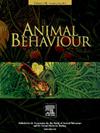测量捕食压力的方法
IF 2.3
2区 生物学
Q2 BEHAVIORAL SCIENCES
引用次数: 0
摘要
捕食压力是一种选择性力量,会导致猎物防御机制的进化。人们正努力利用各种方法来定性和定量地测量和评估捕食压力。作为研究人员的指南,我回顾并讨论了几种常用方法的优缺点,包括直接野外观察、相机陷阱、动物携带仪器、猎物残骸鉴定、生化方法、围栏/排斥实验、猎物损伤鉴定、捕食者调查和孢子追踪。在这些方法中,通过分子工具识别捕食者肠道、反刍物或粪便中的猎物,可以可靠地估计捕食者食物中猎物的种类甚至数量。照相机陷阱或直接观察也能提供可靠的信息,但受限于捕食事件的罕见性。将几种方法结合起来以平衡单个方法的优缺点具有相当大的潜力。例如,人工猎物模型上的攻击咬痕可以与捕食者留下的 eDNA 分子分析相结合。然而,大多数方法仍然缺乏实验验证,无法证明它们确实量化了捕食者与猎物之间相互作用的各个方面。本文章由计算机程序翻译,如有差异,请以英文原文为准。
Approaches to measuring predation pressure
Predation pressure is a selective force that leads to the evolution of defensive mechanisms in prey. Efforts are being made to measure and evaluate predation pressure qualitatively and quantitively, using various methods. As a guide for researchers, I review and discuss the advantages and disadvantages of several commonly used methods, including direct field observations, camera traps, animal-borne instruments, prey remains identification, biochemical methods, enclosure/exclusion experiments, prey damage identification, predator survey and spoor tracking. Among these methods, molecular tools to identify prey in the predator's gut, regurgitate or scat provide reliable estimates of the type and even quantity of prey in a predator's diet. Camera traps or direct observations also provide reliable information but are limited by the often-rare predation events. There is considerable potential in combining several methods to balance out the advantages and disadvantages of individual methods. For example, attack bites on artificial prey models can be combined with molecular analyses of the eDNA left behind by the predator. However, most methods still lack experimental validation to demonstrate that they actually quantify aspects of predator–prey interactions.
求助全文
通过发布文献求助,成功后即可免费获取论文全文。
去求助
来源期刊

Animal Behaviour
生物-动物学
CiteScore
4.60
自引率
8.00%
发文量
236
审稿时长
10.2 weeks
期刊介绍:
Growing interest in behavioural biology and the international reputation of Animal Behaviour prompted an expansion to monthly publication in 1989. Animal Behaviour continues to be the journal of choice for biologists, ethologists, psychologists, physiologists, and veterinarians with an interest in the subject.
 求助内容:
求助内容: 应助结果提醒方式:
应助结果提醒方式:


